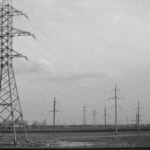In the Australian power sector, the success of electrical engineering projects hinges on meticulous planning and precise execution. Whether it’s developing new infrastructure, upgrading substations, or integrating renewable energy sources, efficient project management ensures projects meet technical requirements, regulatory standards, and budgets while minimising delays and risks. In this article we cover best practices in planning and executing electrical engineering projects, providing insights into strategies that help streamline processes and deliver successful outcomes for complex projects.
1. Begin with a Clear Project Scope
The foundation of any successful project is a well-defined scope that outlines objectives, timelines, deliverables, and resources. Scope clarity helps ensure all stakeholders are aligned and reduces the risk of “scope creep” the gradual expansion of a project’s goals and tasks, often leading to delays and budget overruns. A detailed project scope should include:
- Project goals and objectives: Define what the project aims to achieve.
- Deliverables and milestones: Break down the project into stages or milestones with specific deliverables.
- Timeline: Set realistic deadlines for each phase.
- Budget and resources: Identify financial and engineering resources required for each task.
- Stakeholders: Document everyone involved, from engineers and contractors to regulators and clients.
In Australia’s power sector, projects often involve multiple stakeholders, such as local councils, regulatory bodies, utility companies, and environmental agencies. Defining the scope and aligning expectations across these entities is critical to avoid misunderstandings and ensure compliance with national and state regulations.
2. Establish Effective Project Planning and Scheduling
A comprehensive project plan, complete with detailed scheduling, forms the backbone of effective project execution. Using advanced planning tools such as Gantt charts, PERT (Program Evaluation and Review Technique) diagrams, or project management software can help map tasks, dependencies, and timelines.
Key aspects of effective planning and scheduling include:
- Setting Realistic Milestones: Breaking the project into manageable phases with realistic completion dates. This approach allows for better control over the timeline and facilitates progress tracking.
- Resource Allocation: Ensuring the availability of equipment, materials, and skilled labour when and where they are needed. This helps prevent delays, particularly on projects in remote or regional locations.
- Contingency Planning: Anticipate potential delays or unexpected issues, such as bad weather or supply chain disruptions. Building flexibility into the project timeline allows for adjustments without compromising final deadlines.
Project planners often deal with challenges unique to Australia such as environmental concerns, regulatory requirements, and fluctuating weather conditions. Including these considerations in the schedule helps ensure projects stay on track and meet regulatory standards.
3. Prioritise Safety and Regulatory Compliance
Safety is paramount in electrical engineering projects, and Australian standards are among the strictest in the world. Compliance with the AS/NZS 3000 (Australian/New Zealand Wiring Rules) and other relevant standards ensures the safety and reliability of electrical systems.
Best practices for maintaining high safety standards and regulatory compliance include:
- Regular Safety Audits: Conduct audits and inspections throughout the project to ensure safety protocols are followed.
- Risk Assessments: Identify and evaluate potential hazards and implement measures to mitigate them. This is particularly important in high-voltage and substation projects, where safety risks are high.
- Regulatory Approvals and Permits: Obtain all necessary permits and ensure compliance with local, state, and federal regulations, including environmental regulations if applicable.
- Training and Safety Protocols: Ensure that all team members are trained in safety practices and have access to personal protective equipment (PPE).
Prioritising safety not only prevents accidents but also minimises costly delays associated with regulatory non-compliance.
4. Leverage Technology for Enhanced Project Management
Modern technology provides valuable tools for project management, enabling engineers to monitor progress, manage resources, and communicate effectively.
For instance:
- Project Management Software: Programs like Microsoft Project, Primavera P6, and Smartsheet allow managers to track tasks, resources, and timelines in real-time.
- Building Information Modelling (BIM): BIM helps create detailed project models, providing a comprehensive view of infrastructure before construction begins. This technology is particularly useful for large, complex projects, as it enables the simulation of various design and structural options and helps identify potential issues early.
- Remote Monitoring and IoT: Internet of Things (IoT) devices enable remote monitoring of project sites, particularly useful for projects in remote Australian regions. Sensors and monitoring tools provide real-time data on equipment, environmental conditions, and site safety.
- Cloud-Based Collaboration: Cloud platforms facilitate information sharing and collaboration among geographically dispersed teams, which is particularly useful for large-scale projects that require input from multiple engineering disciplines.
Embracing these technologies allows project managers and engineers to make data-driven decisions, resulting in more efficient and agile project execution.
5. Prioritise Communication and Collaboration
Strong communication and collaboration are essential for managing the complex workflows and coordination required in electrical engineering projects. Clear communication protocols keep all team members and stakeholders informed about project progress, changes, and challenges. Best practices for fostering effective communication include:
- Regular Progress Meetings: Schedule weekly or biweekly meetings to discuss progress, address challenges, and adjust plans as needed.
- Transparent Reporting: Share updates with stakeholders to maintain trust and alignment on project goals.
- Change Management Protocols: Implement a change management process to handle project adjustments. When scope changes arise, ensure that all parties understand the impact on time, cost, and resources.
For Australia’s power industry, where projects often involve collaboration across multiple states and regions, an open line of communication is crucial to prevent misunderstandings and delays.
6. Implement Quality Control and Quality Assurance (QC/QA)
Ensuring the highest quality in project deliverables is essential for the success of any electrical engineering project. QA and QC practices should be embedded throughout the project lifecycle to monitor quality at each stage and ensure that the final output meets required standards.
- Develop a QA/QC Plan: A clear plan outlines quality benchmarks, responsibilities, and protocols for maintaining and checking quality.
- Regular Testing and Inspections: Conduct regular tests and inspections, especially for critical components like transformers, wiring, and structural elements. These tests help detect defects or issues early, reducing the risk of costly rework or delays.
- Documentation: Maintain thorough records of tests, inspections, and project milestones. These documents provide accountability and serve as a reference for future projects.
In Australia, QA/QC practices should comply with relevant standards and guidelines, ensuring that every project phase adheres to strict industry regulations.
7. Embrace Sustainability and Environmental Responsibility
As Australia shifts towards cleaner and more sustainable energy sources, integrating sustainability practices into project planning and execution is increasingly important. Environmental responsibility aligns with industry trends and regulatory requirements and can also reduce long-term project costs.
- Sustainable Material Choices: Select materials and equipment with a low environmental impact. Consider life cycle analysis to evaluate sustainability throughout the project’s lifespan.
- Efficient Resource Use: Optimise energy, water, and material usage to reduce waste and costs. Efficient site management helps prevent excess resource consumption and minimises environmental impact.
- Environmental Compliance: Ensure compliance with environmental laws and regulations. Australia has stringent environmental regulations, and failing to adhere to them can lead to significant penalties and project delays.
In the fast-evolving Australian power sector, the success of electrical engineering projects depends on comprehensive planning, attention to detail, and a commitment to best practices. From defining a clear project scope and prioritising safety to leveraging technology and fostering collaboration, each of these practices plays a vital role in delivering successful outcomes. Additionally, prioritising quality control and sustainability ensures that projects meet not only technical and regulatory standards but also align with industry trends towards cleaner and more responsible power solutions.
Following these best practices enables power companies and project teams to effectively manage risks, streamline timelines, and strengthen Australia’s energy infrastructure. This approach helps shape a reliable, sustainable power industry that supports the nation’s growing energy needs. For expert management on your next project, speak to the Partum Engineering team about how we can give your project the edge.






